China’s new first-tier cities evaluated 337 prefecture-level and above cities in terms of commercial resource agglomeration, urban hub, urban population activity, lifestyle diversity and future plasticity.
In 2019, 15 new first-tier cities were Chengdu, Hangzhou, Chongqing, Wuhan, Xi’an, Suzhou, Tianjin, Nanjing, Changsha, Zhengzhou, Dongguan, Qingdao, Shenyang, Ningbo and Kunming. The rankings of the first four new first-tier cities are relatively stable, and the ranking of Changsha is one more than last year.China’s New First-tier Cities in 2019 are these:
1.Chengdu 成都
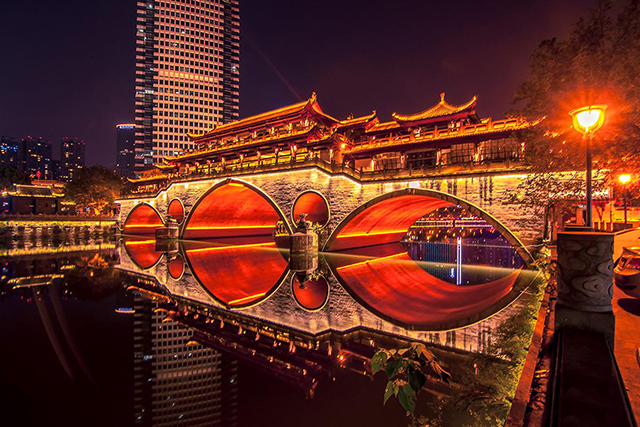
Chengdu, a prefecture-level city under the jurisdiction of Sichuan Province, referred to as Rong, nicknamed “Rongcheng, Jincheng”, is the capital of Sichuan Province, a sub-provincial city, a mega city, a resident of the western theater, and an important national high-tech industrial base determined by the State Council. The center and integrated transportation hub are important central cities in the western region. In 2018, the city has jurisdiction over 20 district (city) counties and Chengdu High-tech Zone, and Tianfu New District Chengdu Zhiguan District, covering an area of 14,335 square kilometers, with a resident population of 16.33 million and a GDP of 1,543.277 billion yuan.
Chengdu is located in the western part of the Sichuan Basin and in the hinterland of the Chengdu Plain. It has a flat terrain, a river network, rich products and developed agriculture. It belongs to the subtropical monsoon humid climate and has enjoyed the reputation of “the land of abundance” since ancient times. As an important electronic information industry base in the world, there are countries. There are 30 scientific research institutions, 67 national R&D platforms, 56 colleges and universities, about 3.89 million talents, and 285 of the world’s top 500 enterprises.
Chengdu is a national historical and cultural city, the birthplace of ancient civilization, one of China’s top ten ancient capitals. The enlightened dynasty IX was “one year into two, two years in Chengdu”, hence the name Chengdu; there have been seven separatist regimes here to build capital; it has been the state and county governor of various dynasties; Han is one of the five major cities in the country; As one of the most developed industrial and commercial cities in China, the history is called “Yang Yi Yi Er”; the Northern Song Dynasty is the second largest city outside of Beijing, inventing the world’s first banknotes. It has excellent historical sites such as Dujiangyan, Wuhou Temple, Dufu Caotang and Jinsha Site.
2.Hangzhou 杭州
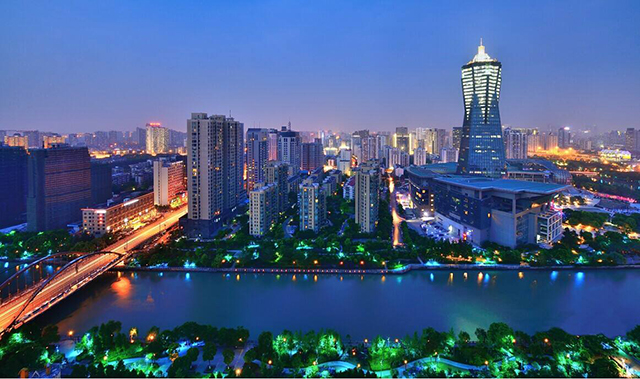
Hangzhou, referred to as “Hang”, is called Lin’an and Qiantang. It is the capital city of Zhejiang Province, the sub-provincial city, the core city of Hangzhou metropolitan area, the provincial capital of Zhejiang Province approved by the State Council, and the economic, cultural, scientific and educational center of the province and the central city of the Yangtze River Delta. One. As of 2018, the city has 10 districts, 2 counties, and 1 county-level city under its jurisdiction, with a total area of 16,853.57 square kilometers, a built-up area of 559.2 square kilometers, a resident population of 98.06 million, and an urban population of 7.5 million. The urbanization rate is 77.4%.
Hangzhou is located in the southeast coast of China, the northern part of Zhejiang Province, the lower reaches of the Qiantang River and the southern end of the Beijing-Hangzhou Grand Canal. It is the core city of the Dawan District of Hangzhou Bay, the central city of Shanghai Jiahang G60 Science and Technology Corridor, and an important international e-commerce center. There are many cultural relics in Hangzhou. There are a large number of natural and cultural landscapes in the West Lake and its surrounding areas. The representative Western Lake culture, Liangzhu culture, silk culture, tea culture, and many stories and legends that have been handed down have become representatives of Hangzhou culture.
Hangzhou has a history of more than 2,200 years since it was established in the Qin Dynasty. It was once the capital of Wu Yueguo and the Southern Song Dynasty. Because of its beautiful scenery, it is known as the “paradise on earth”. Hangzhou has benefited from the convenience of the Beijing-Hangzhou Grand Canal and the Tongshang Port, as well as its well-developed silk and grain industry, which was once an important commercial distribution center in history. Later, relying on the opening of railway lines such as the Shanghai-Hangzhou Railway and Shanghai’s import and export trade, the light industry developed rapidly. Since the new century, with the promotion of high-tech companies such as Alibaba, the Internet economy has become a new economic growth point in Hangzhou.
The 2018 World Short Pool Swimming Championships and the 2022 Asian Games were held in Hangzhou. In January 2018, Hangzhou was selected as the first demonstration city for social credit system construction. In 2017, China ranked the top 100 in the top 100 cities. Re-confirmation of national health cities (districts) in 2018. In June 2019, the future network test facility was opened.
3.Chongqing 重庆
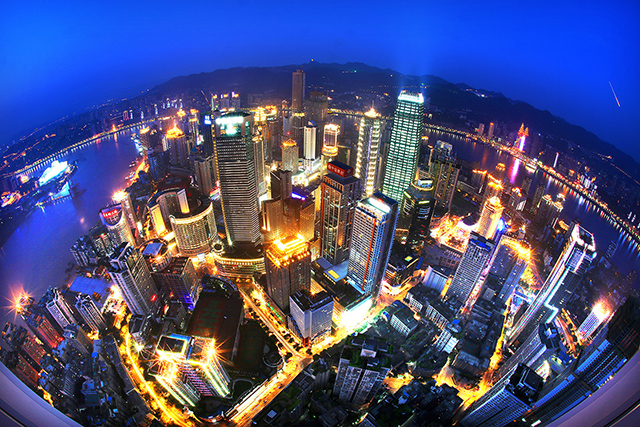
Chongqing is located in the southwest of China’s inland, east of Hubei and Hunan, south of Guizhou, west of Sichuan, and north of Shaanxi. With a total area of 82,400 square kilometers, it administers 38 districts and counties (autonomous counties); in 2018, Chongqing has a resident population of 31,017,900 and a regional GDP of 203,361.19 million yuan; it is known as the Chinese hot pot capital, the China Convention and Exhibition City, and the world’s hot spring capital. .
Chongqing is a comprehensive transportation hub that integrates things from southwest China and connects north and south. Its Jiangbei Airport is one of the “Top Ten” airports in China, and the Orchard Port is the starting point of the new European channel. Chongqing is located in the eastern part of the basin. The terrain is inclined from north to south to the Yangtze River valley. The landform is dominated by hills and mountains, and its mountainous area accounts for 76%. The Yangtze River runs from west to east across the territory, with a flow of 691 kilometers.
Chongqing is a national historical and cultural city. In 1189, Song Guangzong Zhao Yu first sealed the king of the king and then the emperor, since the “double celebration”, Chongqing got its name. Chongqing is the origin of the “Red Rock Spirit”, the birthplace of the Bayu culture, “hot pot”, “hanging foot building” and other far-reaching influences; in the history of more than 3,000 years, Zeng San is the capital of the country, building the city four times, the history is called “Ba Yu” During the War of Resistance, the National Government accompanied the capital.
Chongqing is the largest industrial and commercial city in the southwest region and an important modern manufacturing base of the country. There are 8 national key laboratories, 10 national engineering technology research centers, 67 universities, and China (Chongqing) Free Trade Pilot Zone, Zhongxin (Chongqing) Strategic Interconnection Demonstration Project, Liangjiang New District, strategic projects such as the New Europe International Railway.
4.Wuhan 武汉
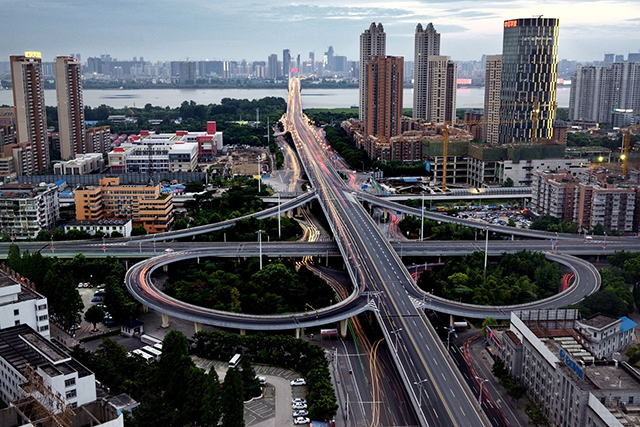
Wuhan, referred to as “Han”, nicknamed Jiangcheng, is the provincial capital of Hubei Province, the sub-provincial city, the Central Military Commission, the joint security support force resident, the central city of central China approved by the State Council, the country’s important industrial base, science and education base and comprehensive transportation As of 2018, the city has 13 districts with a total area of 8494.41 square kilometers, a built-up area of 628 square kilometers, a resident population of 11.081 million, an urban population of 8,896,900, and an urbanization rate of 80.2%. Megacity.
Wuhan is located in the eastern part of the Jianghan Plain and in the middle reaches of the Yangtze River. The Yangtze River and the Han River traverse the central part of the city. The central city of Wuhan is divided into three parts, forming a pattern of three towns across the river. The water area accounts for one quarter of the city’s total area, which constitutes the riverside. The ecological environment of the waters of Binhu. Wuhan is known as the “Nine Provinces Wanted”. It is the largest water, land and air transportation hub in China’s inland and the shipping center of the middle reaches of the Yangtze River. Its high-speed rail network radiates more than half of China, and is the only city in Central China that can directly navigate the world’s five continents.
Wuhan is an important birthplace of the country’s historical and cultural city and Chu culture. The site of the Panlong City has a history of 3,500 years. Since the Spring and Autumn Period and the Warring States Period, Wuhan has been a military and commercial center in southern China. During the Ming and Qing Dynasties, it became one of the “most prosperous places in Chuzhong” and “the world is in the middle of the world”. The Westernization Movement in the late Qing Dynasty promoted the rise of Wuhan’s industry and commerce, making it an important economic center of modern China, and was known as “Oriental Chicago.” Wuhan is the birthplace of China’s democratic revolution. The Wuchang Uprising, as the beginning of the 1911 Revolution, has important historical significance.
In March 2016, the “Outline of the Yangtze River Economic Belt Development Plan” listed Wuhan as a mega-city; in December, the National Development and Reform Commission clearly requested that Wuhan accelerate the completion of the National Economic Center, the High-level Science and Technology Innovation Center, the Trade and Logistics Center and the International Exchange Center. The function is the support of the national central city.
In October 2019, the 7th World Military Games will be held in Wuhan.
5.Xi’an 西安
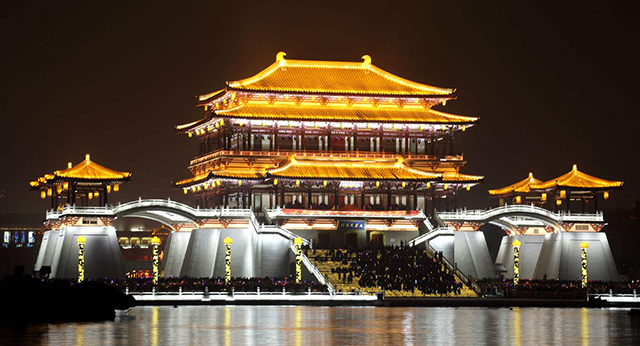
Xi’an, known as Chang’an and Yujing, is the capital city of Shaanxi provincial capital, deputy provincial city, and Guanzhong Plain. It was the starting point of the ancient Silk Road and the core area of the “Belt and Road” and an important central city in western China. National important research, education and industrial base. UNESCO’s “World Historic City” was established in 1981. It is located in the middle of the Guanzhong Plain, Beibei River, south of the Qinling Mountains, and Liushui Run Chang’an. It has jurisdiction over 11 districts and 2 counties and administers Xixian New District, with a total area of 10,752 square kilometers. At the end of 2018, the resident population was 10,037,700, and the resident population’s urbanization rate was 74.01%. The annual GDP of the region was 834.986 billion yuan.
Xi’an is one of the important birthplaces of Chinese civilization and the Chinese nation. In history, more than a dozen dynasties have built capitals here [8]. Fengdu Ducheng, Qin Afang Palace, Terracotta Warriors, Han Weiyang Palace, Changle Palace, Daxing City, Tang Daming Palace, Xingqing Palace, etc. outline the “Changan Complex”.
Xi’an is one of the best tourist destinations in China and one of the best cities in China’s international image. Two of the six heritages are listed on the World Heritage List: Qin Shihuang Mausoleum and Terracotta Warriors, Big Wild Goose Pagoda, Small Wild Goose Pagoda, Tang Chang’an The ruins of Cheng Daming Palace, the site of the Hanyang Palace in the Han Dynasty, and the tower of Xingjiao Temple. [12] There are also Xi’an City Wall, Bell and Drum Tower, Huaqing Pool, Zhongnan Mountain, Datang Furong Garden, Shaanxi History Museum, Beilin and other attractions. Xi’an has seven “double-class” construction universities including Xi’an Jiaotong University, Northwestern Polytechnical University and Xi’an University of Electronic Science and Technology.
In February 2018, the National Development and Reform Commission and the Ministry of Housing and Urban-Rural Development issued the “Guanzhong Plain Urban Agglomeration Development Plan” to support Xi’an to build a national central city, an international comprehensive transportation hub, and to build an international metropolis with historical and cultural characteristics.
6.Suzhou 苏州
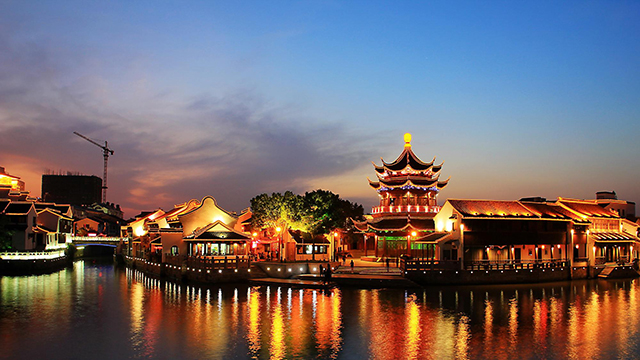
Suzhou, referred to as “Su”, is known as Wu, Gusu and Pingjiang Prefecture. It is an important part of the prefecture-level city and Yangzijiang urban agglomeration under the jurisdiction of Jiangsu Province. The State Historical and Cultural City and the Scenic Tourism City and National High-tech are approved by the State Council. Industrial base, one of the important central cities in the Yangtze River Delta. As of 2018, the city has jurisdiction over 5 districts and administers 4 county-level cities, with a total area of 848.842 square kilometers, a built-up area of 461.65 square kilometers, a resident population of 10.72117 million, an urban population of 815.39 million, and an urbanization rate of 76.05. %.
Suzhou is located in the southeastern part of Jiangsu Province, in the middle of the Yangtze River Delta, east to Shanghai, south to Jiaxing, west to Taihu Lake, and north to the Yangtze River. It is located at 119°55′~121°20′ east longitude and 30°47′~32°02′ north latitude. between. The city’s terrain is low, the plains account for 54.8% of the total area, about 4 meters above sea level, and the hills account for 2.7% of the total area. Suzhou is a subtropical monsoon maritime climate with four distinct seasons and abundant rainfall. It grows rice, wheat, and rapeseed, and produces cotton, sericulture, and fruit. The specialties include Biluochun Tea, Yangtze River Swordfish, Taihu Silverfish, and Yangcheng Lake Hairy Crab.
Suzhou is one of the first 24 national historical and cultural cities in China. It has a history of nearly 2,500 years and is one of the birthplaces of Wu culture. It is one of the “four heavens” in the Qing Dynasty and has the reputation of “paradise on earth”. . Suzhou Garden is the representative of China’s private gardens. 9 classical gardens such as Humble Administrator’s Garden, Lingering Garden, Net Master Garden, Huanxiu Villa, Canglang Pavilion, Lion Forest, Geisha, Coupled Garden and Retreat Park are covered by UNESCO. Listed in the World Cultural Heritage List. The Suzhou section of the Grand Canal of China was selected as a World Heritage Site.
In December 2018, Suzhou was ranked No. 1 in the best prefecture-level city in China in 2018, the third in the 30 cities with the strongest innovation, and the third in the best tourist destinations in China.
7.Tianjin 天津
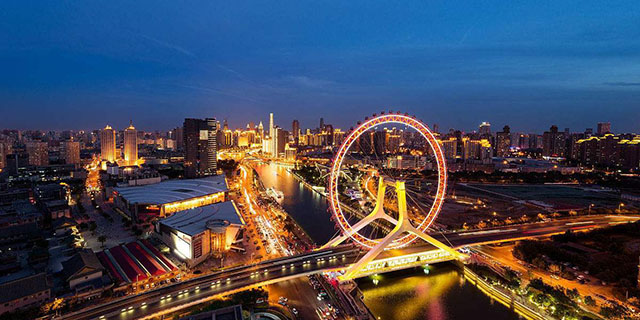
Tianjin, referred to as “Tianjin”, nicknamed Jinyu and Jinmen, is the economic center of the Bohai Rim region approved by the State Council, the national central city, the megacities and the State Council. By 2018, the city has jurisdiction over 16 districts with a total area of 11,916.85 square kilometers, a built-up area of 1007.91 square kilometers, a resident population of 15.59 million, an urban population of 12.9681 million, and an urbanization rate of 83.15%.
Tianjin is located in North China, east of the Bohai Sea, northeast of the North China Plain, and downstream of the Haihe River. It is the confluence of the South Canal, Ziya River, Daqing River, Yongding River and North Canal, the five major tributaries of the Haihe River, and is known as the “Jiuhe River”. The tip of the river is called the river. Tianjin is the main node of the Sino-Mongolian-Russian economic corridor, the strategic fulcrum of the Maritime Silk Road, the intersection of the “Belt and Road”, the nearest eastern starting point of the Eurasian Continental Bridge, and the largest port city in northern China, the first coastal open cities.
8.Nanjing 南京
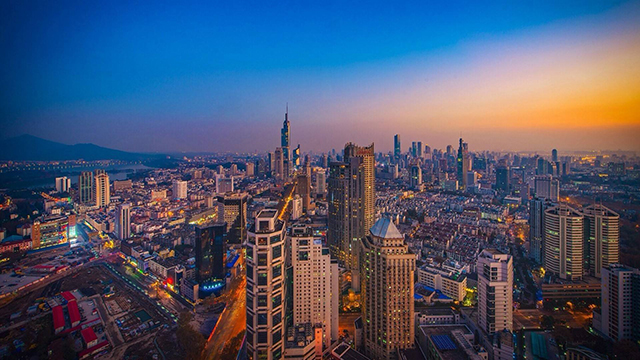
Nanjing, referred to as “Ning”, is called Jinling and Jiankang. It is the capital city of Jiangsu Province, the sub-provincial city, and the core city of Nanjing Metropolitan Area. The important central city in the eastern part of China, the national important research and education base and the comprehensive transportation hub approved by the State Council. . As of 2018, the city has 11 districts with a total area of 6,587 square kilometers, a built-up area of 971.62 square kilometers, a resident population of 8,436,200, an urban population of 6,599,900, and an urbanization rate of 82.5%. It is the only one in the Yangtze River Delta and East China. Megacity.
Nanjing is one of the first national historical and cultural cities and an important birthplace of Chinese civilization. It has long been the political, economic and cultural center of southern China. It has been used to protect China’s summer and has a special status and value in Chinese history. Nanjing has an ancient human activity as early as 1 to 1 million years ago. There were Nanjing monks living in Tangshan between 350,000 and 600,000 years ago. It has a history of more than 7,000 years of civilization, a history of nearly 2,600 years, and a history of nearly 500 years. “The ancient capital of the Six Dynasties”, “the capital of the ten dynasties”.
Nanjing is an important national science and education center. Since ancient times, it has been a city of Chongwen and Jiaojiao. It has the reputation of “Tianxiashuo” and “Southeast First School”. In the Ming and Qing Dynasties, more than half of China’s champions were from Nanjing Jiangnan Gongyuan. As of 2018, there were 71 colleges and universities in Nanjing, including 11 colleges and universities and 25 disciplines, second only to Beijing; 8 universities, 211 colleges and universities, 12 colleges and universities, and 81 academicians of the two academies, all of which are stable in China. Third, ranking among the top 50 global research cities, Nanjing ranks 12th in the world and 3rd in China.
9.Changsha 长沙
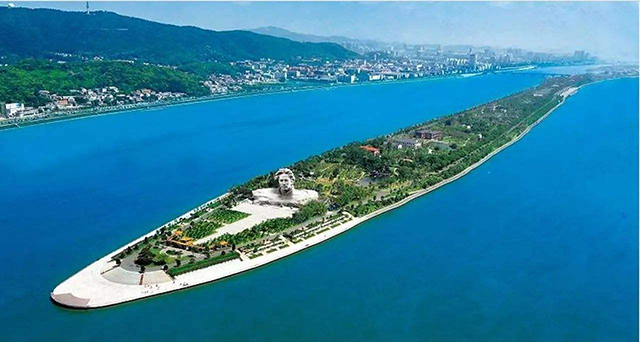
Changsha is located in the north of Hunan Province, north of the Xiangjiang River and the western edge of the Changliu Basin. The total area is 11,819 square kilometers; it administers 6 districts, 1 county, and 2 county-level cities; in 2017, the resident population is 79.18 million, and the urbanization rate is 77.59%. In 2018, the regional GDP was 1,100.341 billion yuan. The terrain in the territory is relatively undulating, with various types of landforms and developed surface water systems. The climate is mild, the four seasons are distinct, and the Xiangjiang River passes through the city.
Changsha is one of the first national historical and cultural cities. After three thousand years of city name and city site, it has the title of “Hometown of Qujia”, “Chuhan Famous City” and “Xiangxiang Temple”. There are historical relics such as Mawangdui Han Tomb, Siyang Fangzun, Three Kingdoms Wujian, Yuelu Academy, Tongguan Kiln. Condensed the Huxiang culture of “usefulness and eclecticism.” Changsha is not only one of the Qing Dynasty’s reform movement and the source of the old democratic revolution, but also one of the birthplaces of new democracy. Out of the celebrities such as Huang Xing, Cai Wei, Liu Shaoqi.
Changsha is the best city of China (Mainland) international image, the capital of East Asian culture, and the world’s “media art capital. It has created cultural brands such as “TV Xiang Army”, “Publishing Xiang Army” and “Anime Xiangjun”. Changsha has universities. 51 institutes, 97 independent scientific research institutions, 52 academicians of the two academies, 14 national engineering technology research centers, and 15 national key engineering laboratories; research on hybrid rice breeding, “Tianhe” supercomputer, and the first domestic 3D sintering printer Results: In February 2019, it was rated as an advanced unit of municipal-level national traditional Chinese medicine work by the State Administration of Traditional Chinese Medicine.
10.Zhengzhou 郑州
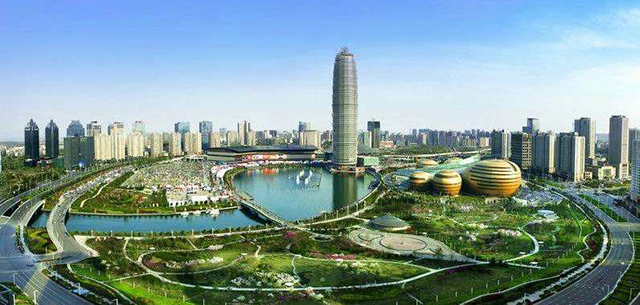
Zhengzhou City is located in the middle and lower reaches of the Yellow River and the transition zone of the northeastern wing of the Funiu Mountain Range to the Huanghuai Plain. It is high in the west, low in the east, high in the middle, low in the northeast or low in the southeast. It belongs to the north temperate continental monsoon climate with four distinct seasons. As of 2018, Zhengzhou has jurisdiction over 6 municipal districts and 1 county, and administers 5 county-level cities, with a total area of 7446 square kilometers, a built-up area of 830.97 square kilometers, a total population of 10.13 million, and a total production value of 1,014.33 billion yuan. .
Zhengzhou is an important hub city for railway, aviation, electric power and postal telecommunications in the country. It has the largest trucking station in Asia. Zhengzhou Airport Port Area is the only national-level airport economic comprehensive experimental area in China. Zhengzhou Commodity Exchange is China’s first futures exchange, and Zhengzhou is also a core component of China (Henan) Free Trade Pilot Zone.
Zhengzhou is an important birthplace of Chinese civilization, a national historical and cultural city, one of the eight ancient capitals of China, and one of the six major national ruins. In the history of Zhengzhou, it has been the capital for five times. It is the hometown of the Chinese ancestor Xuanyuan Huangdi. It has nearly 10,000 immovable cultural relics, including 2 world cultural heritages and 80 national key cultural relics protection units.
In December 2016, the National Development and Reform Commission approved Zhengzhou to build a national central city. In January 2017, the National Development and Reform Commission issued the “Guiding Opinions on Building a National Center City in Zhengzhou”, stating that Zhengzhou should give full play to its location advantages, build a transportation and logistics hub, highlight humanistic characteristics, and build an international modern city.
11.Dongguan 东莞
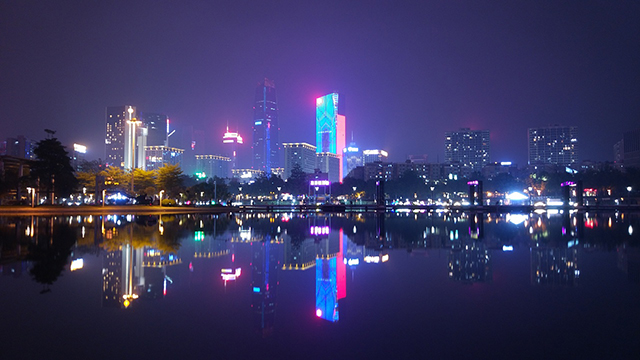
Dongguan, also known as Guancheng, is one of the prefecture-level cities under the jurisdiction of Guangdong Province, one of the central cities in the Pearl River Delta, and one of the cities in Guangdong, Hong Kong and Macao. The State Council approved the central city of the Pearl River Delta. By 2018, the city has 4 streets and 28 towns with a total area of 2,465 square kilometers, a built-up area of 958.86 square kilometers, a resident population of 8,392,200, an urban population of 7,638,600, and an urbanization rate of 91.02%.
Dongguan is located in the south-central part of Guangdong Province, Zhujiang Port, north of Guangzhou, west and Guangzhou across the sea, south of Shenzhen, east of Huizhou, the first of the “Guangdong four small tigers”, known as the “world factory”, It is an important transportation hub and foreign trade port in Guangdong, and one of the five prefecture-level cities in the country without a district, one of the new first-tier cities.
Dongguan built a county in the Three Kingdoms Period and has a history of more than 1,700 years. It is an important birthplace of Lingnan civilization. It is the opening place of China’s modern history and the pioneer of reform and opening up. Guangdong’s important transportation hub and foreign trade port are listed as the first. Approved the national new urbanization comprehensive pilot area and Guangdong historical and cultural city. Dongguan has about 1.2 million compatriots from Hong Kong and Macao and 300,000 overseas Chinese. It is a famous hometown of overseas Chinese and a land of Cantonese opera. It has won the titles of national forest city, international garden city, national civilized city and national basketball city.
In April 2015, the representative of more than 200 cities around the world at the ICLEI World Congress in Seoul, South Korea, listened to “Dongguan Voice”. In December 2017, it was identified as the third batch of “Model City for Service Management of Minority Floating Population” by the General Office of the State Ethnic Affairs Commission. In December 2018, 2018 ranked 24th in the best commercial city in mainland China, 5th in the best prefecture-level city in mainland China, and 7th in the 30 cities with the strongest innovation.
12.Qingdao 青岛
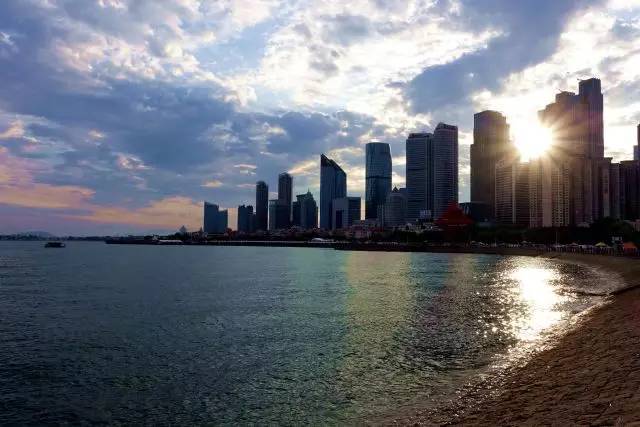
Qingdao is located in the southeast coast of the Shandong Peninsula, in the eastern part of the Jiaodong Peninsula, in the forefront of the China-Japan-Korea Free Trade Zone; on the edge of the Yellow Sea, across the sea from the Korean Peninsula, adjacent to Yantai in the northeast, Weifang in the west, and Rizhao in the southwest; Covering an area of 11,282 square kilometers, it administers 7 districts and administers 3 county-level cities. In 2017, the total resident population was 929,500,500, and the regional GDP was 1,073.728 billion yuan.
The Qingdao area was formerly known as Jiaoao, a national historical and cultural city and the birthplace of Chinese Taoism. Before 6,000 years ago, there were human existence and reproduction in the territory. It is named after the evergreen trees due to the numerous trees. In 1891, the Qing government was stationed in the army. In 1897, Germany leased and built ports and railways. In November 1914, Japan replaced Germany to occupy Qingdao. On June 2, 1949, Qingdao was liberated.
Qingdao is the host city of the 2008 Beijing Olympic Games and the 13th Paralympic Games sailing competition. It is the sailing capital of China, the best sailing city in Asia, the world beer city, the United Nations “Movie Capital”, the first batch of coastal open cities in the country, and the national civilization. City, China’s most happy city. Known as the “Oriental Switzerland” Ouyun Capital, “China’s brand capital” title.
Qingdao is an international marine scientific research and education center, with 26 universities including Shandong University (Qingdao) and China Ocean University. Introduced 29 universities including Tsinghua University and Peking University. Qingdao has a wide variety of exotic buildings and is known as the “World Architecture Exhibition”. The Badaguan Building Group was awarded the title of “China’s Most Beautiful City”.Re-confirmation of the National Health City in 2018.
13.Shenyang 沈阳
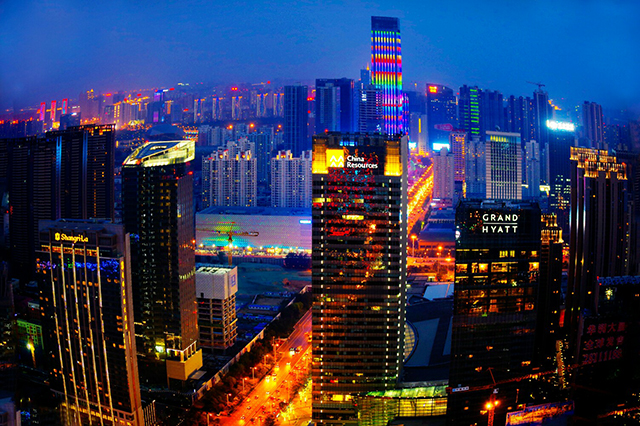
Shenyang, referred to as “Shen”, not only Shengjing, Fengtian, is the capital city of Liaoning Province, the sub-provincial city, the core city of Shenyang metropolitan area, and the important central city and advanced equipment manufacturing base in Northeast China approved by the State Council. As of 2018, the city has 10 districts, 2 counties, and 1 county-level city under its jurisdiction, with a total area of 12,948 square kilometers, a built-up area of 588.26 square kilometers, a resident population of 8.316 million, and an urban population of 6.014 million. The urbanization rate is 72.3%, which is the only mega city in the Northeast.
Shenyang is located in the center of the Northeast Asian Economic Circle and the Bohai Economic Circle. The geographical center of Northeast Asia and the central part of Liaoning are the headquarters of the Northern China Theater Command [5], the Shenyang Joint Service Center, the Yangtze River Delta, the Pearl River Delta, and Beijing. The comprehensive transportation hub leading to the Kanto region in the Jin-Yu area, the “One Belt, One Road” is an important node extending to Northeast Asia and Southeast Asia.
Shenyang is a famous historical and cultural city of the country. It is the birthplace of the Qing Dynasty and is known as the birthplace of the two dynasties. In 1625, the Qing Taizu Nurhachi moved to this place, and Huang Taiji built the capital of the capital, and established the Qing Dynasty in China. This is the turning point of Shenyang’s history. From the small military guardian to the Shengjing Emperor, one of the two brothers in the Qing Dynasty. The city began to become the central city of the Northeast. After the founding of the People’s Republic of China, Shenyang became an important heavy industry base in China, mainly known as the equipment manufacturing industry. It was hailed as the “Republican Equipment Department” and had the reputation of “the eldest son of the Republic” and “Oriental Ruhr”.
Shenyang has successively won the title of National Civilized City, National Environmental Protection Model City, National Forest City, National Garden City, National Health City, China Top Ten Ice and Snow Tourism City, etc. It is a national new industrialization comprehensive reform pilot zone and a two-integration demonstration zone. It is accelerating the construction of a national central city, an advanced equipment manufacturing base, and an ecologically livable capital, and fully promote the comprehensive revitalization of the old industrial base.
14.Ningbo 宁波
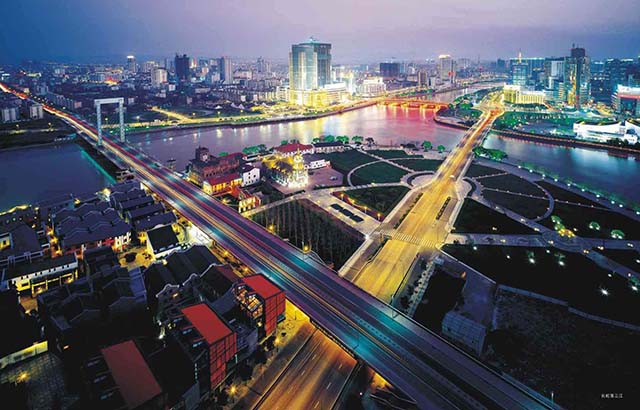
Ningbo, referred to as “yong”, is a sub-provincial city and a separate city under the jurisdiction of Zhejiang Province. It is an important port city on the southeast coast of China and the economic center of the south wing of the Yangtze River Delta. As of 2018, the city has jurisdiction over 6 districts, 2 counties, and 2 county-level cities under its jurisdiction, with a total area of 9816 square kilometers, a built-up area of 345.49 square kilometers, a resident population of 8.202 million, and an urban population of 5,979,300. The urbanization rate is 72.9%.
Ningbo is located in the southeast coast of China, in the middle of the mainland coastline, in the south wing of the Yangtze River Delta, and in the east, the Zhoushan Islands are natural barriers. Ningbo is a typical Jiangnan water town and a port city. It is the estuary of the southern end of the Chinese Grand Canal and the “Maritime Silk Road”. Port. Ningbo Zhoushan Port ranks first in the world in terms of cargo throughput. It ranks among the top three in the world in terms of container volume. It is a multi-functional, comprehensive and modern deep-water port integrating river ports, estuary ports and seaports.
Ningbo is a national historical and cultural city. In the Xia Dynasty of 2000 BC, the name of Ningbo was “yin”. In the Spring and Autumn Period, it was the border of the country. Qin Dynasty belonged to the three counties of Huiji County, and the Tang Dynasty was called Mingzhou. In the first year of the Tang Dynasty (821), the governor of Mingzhou moved to Sanjiangkou and built the inner city, marking the beginning of Ningbo’s construction of the city. In the 14th year of Ming Hongwu (1381), the meaning of “Hai Ding Bo Ning” was changed to Ningbo, which has been used until now. It is the hometown of famous academicians in China.
In 2006, Ningbo Port was rated as “the world’s five best ports” by the British “Container International” magazine; in 2016, it was named the capital of East Asian culture; in December 2018, it was ranked as the 16th best commercial city in mainland China. Name, 2018 One of the 30 cities with the strongest innovation in China.
15.Kunming 昆明
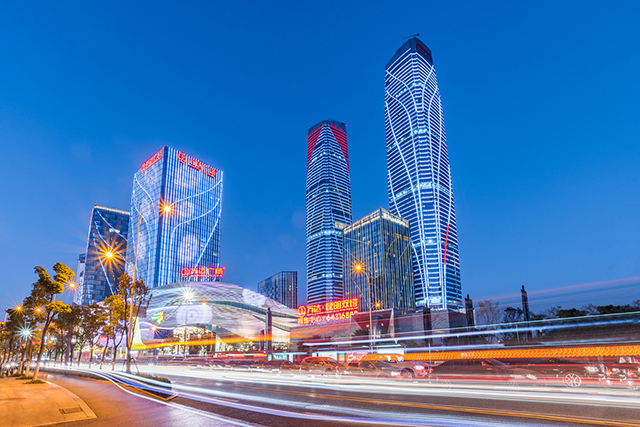
Kunming enjoys the reputation of “Spring City”, China is a gateway city open to Southeast Asia and South Asia, and a national historical and cultural city. It is an important tourism and commercial city in China and one of the important central cities in the western region.
Kunming is a mountainous landform. The terrain is generally high in the north and low in the south, with multiple caves and lava fields. The lava basin has a stone forest dam. It belongs to the north subtropical low latitude plateau mountain monsoon climate. The annual average temperature is 16.5 °C, the average annual rainfall is 1,450 mm, and the frost-free period is 278 days. The climate is pleasant. Kunming is surrounded by mountains on three sides, and Nanxunchi Lake. Dianchi Lake is the largest plateau lake in Yunnan Province, the sixth largest freshwater lake in the country, with beautiful scenery along the banks of the lake. Due to its low latitude plateau, it forms a climate of “four seasons like spring”, especially the plateau lake Dianchi is regulating the temperature and humidity, making the air fresh, the sky is high, the sun is shining, and the flowers are always open.
Kunming is open and fashionable, enriching the geographical advantages of Yunnan. From the “Southern Silk Road” more than 2,000 years ago to the open Kunming, it has been a land hub for economic and trade exchanges and political ties between the East Asian continent and the Central and South Asian subcontinent countries. . “China Kunming Import and Export Fair”, “China International Tourism Trade Fair” and “China Kunming International Tourism Festival” make Kunming one of the major convention and exhibition cities in China.
2018 ranked 23rd in the best commercial city in mainland China. Re-confirmation of national health cities (districts) in 2018.